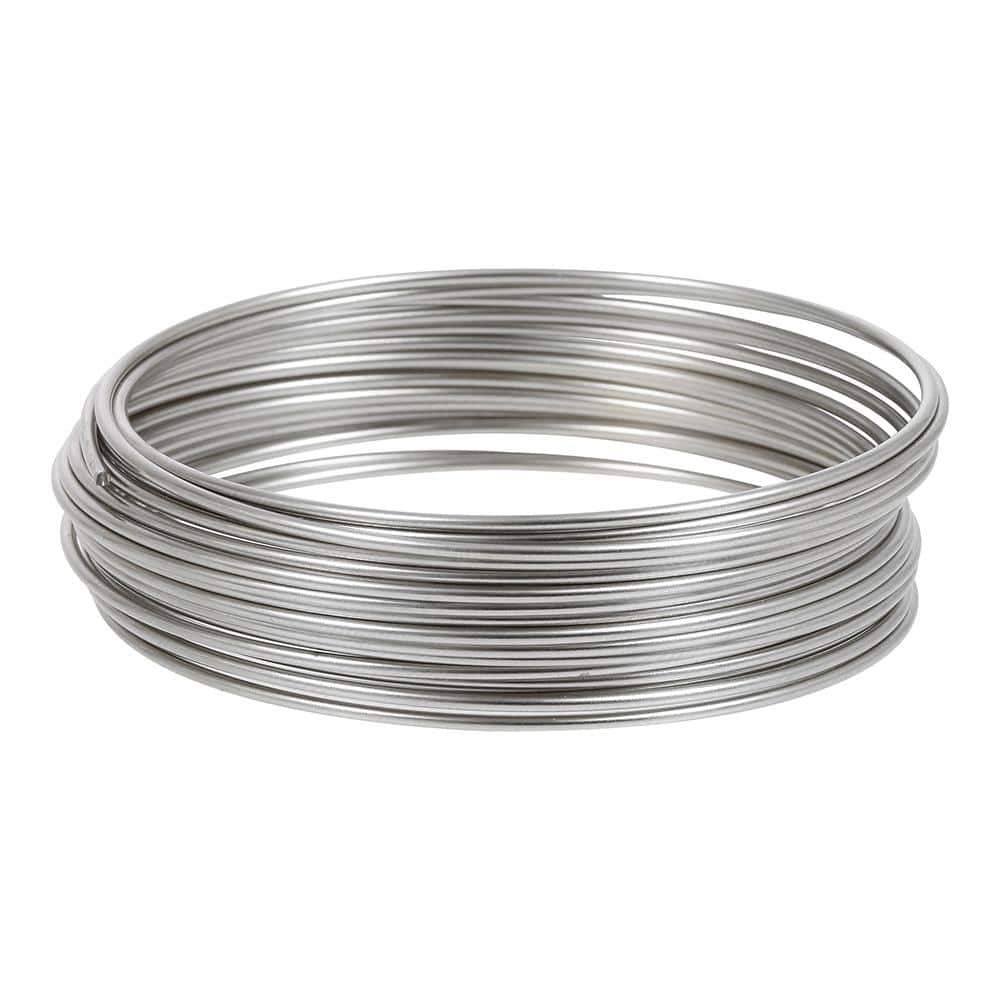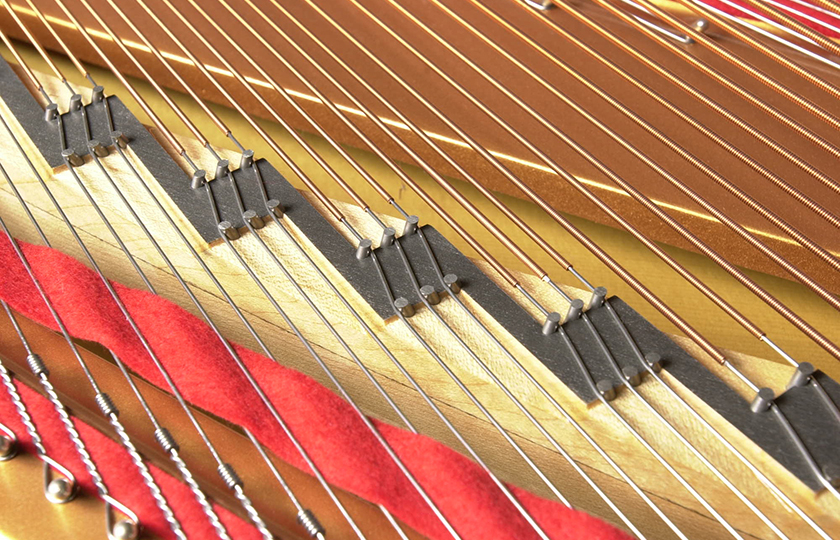Piano wire is a specialized type of wire made for use in piano strings. It’s known for its high tensile strength and durability.
Piano wire plays a crucial role in the music industry, particularly in the manufacturing and maintenance of pianos. Crafted from high-carbon steel, also referred to as music wire, it offers the resilience and elasticity necessary for producing clear, resonant sounds.
Musicians and piano technicians rely on the consistent quality of piano wire for tuning stability and dynamic range. This wire is not only limited to pianos; due to its strength, it finds applications in other musical instruments, as well as in sculptures, wire cutting, and even in certain types of magic tricks. Its versatility and reliability make piano wire a vital component in both artistic and industrial fields.
History Of Piano Wire
Let’s delve into the history of piano wire, an essential component that profoundly affects the sound of this classic instrument. From its origin to the advanced crafting methods we see today, piano wire has a rich and melodic past.
Early Materials And Usage
Long ago, piano wire was not the strong metal we know today. Makers used materials readily available to them. They looked for durability and resonance to create beautiful sounds. Early pianos often featured strings made of animal gut, commonly referred to as catgut, though never actually from cats. These gut strings produced a softer, milder tone compared to modern wires.
Evolution Of Wire Making Techniques
Over time, the production of piano wire evolved. Metal wires started replacing gut strings in the early 1700s. Brass and iron were among the first metals used, offering a brighter tone and increased durability. With the industrial revolution came better machinery for wire making. By the late 1800s, steel wire became the standard for its superior strength and musical quality. Craftsmen developed precise methods to draw metal into thin, strong wires, perfect for the tension-needed inside a piano.
In the current day, piano wire is a specialized product with a specific composition of high-carbon steel, known for its elasticity and longevity. Advanced technologies ensure consistent quality and diameter, crucial for the instrument’s sound performance. This high-grade wire allows pianos to sing with a full, rich tone that was once impossible to achieve.
Materials Used In Piano Wire
The heart of a piano lies in its strings, often referred to as piano wire.
Piano wire must be durable, elastic, and resistant to corrosion. The right material ensures pure tones and longevity.
Steel: The Standard Choice
Steel is the go-to for most piano wires.
- High tensile strength for durability
- Flexible enough to vibrate without breaking
- Consistent quality and performance
Alternative Materials And Innovations
Makers continuously experiment with new materials.
The aim is to enhance sound and reduce environmental impact.
- Beryllium copper: Adds resonance
- Carbon fiber composites: For tuning stability
- 3D printing techniques: Leading to innovative designs
Manufacturing Process
The manufacturing process of piano wire involves precision engineering. From raw material to the final product, every step is crucial for creating durable, high-quality wires that can withstand the tension of a piano’s mechanics. Let’s delve into the meticulous procedure, exploring how a simple metal rod transforms into the melodious strings of a piano.
Drawing The Wire
The journey begins with drawing the wire. This step shapes the wire to its desired thinness. Starting from a thick steel rod, machinery pulls the rod through a series of dies. Each die reduces the wire diameter slightly. This is done repeatedly until the wire reaches the required thinness for a piano string.
Coating And Finishing
After drawing, the wire undergoes coating and finishing. A specialized coating prevents rust and enhances the wire’s durability. The wire is then smoothed and polished. During this stage, it gains its sleek, shiny appearance. The coating process also includes lubrication, which helps reduce friction and wear over time.
Quality Control Measures
Ensuring consistent quality is key. Quality control measures are stringent in piano wire manufacturing. Technicians perform tests to check the wire’s strength, elasticity, and tonal quality. These tests may include tension trials and acoustic evaluations. Wires passing all benchmarks proceed to be packaged and shipped for use in pianos worldwide.

Credit: en.wikipedia.org
Physical And Acoustic Properties
The physical and acoustic properties of piano wire play a crucial role in music. The wire, also known as music wire, is a specialized type of wire. It must be both strong and flexible. These traits let the wire vibrate for a long time. This is very important for making beautiful piano music.
Tensile Strength And Elasticity
Tensile strength means how much force a wire can take before breaking. Piano wire has high tensile strength. This is because it is made of high-carbon steel. The wire must not break when stretched. Elasticity is another crucial feature. It lets the wire return to its original shape after being hit by the piano hammers. The balance of strength and elasticity ensures durability and consistent sound quality.
Influence On Piano Tone And Timbre
The properties of the wire affect how a piano sounds. The wire’s thickness, length, and tension contribute to the piano’s tone and timbre. Thicker wires produce lower tones. Thinner wires make higher tones. The way the wire vibrates also creates the piano’s unique timbre. Good piano wire vibrates clearly. This makes sounds that are rich and full. Each note a piano plays depends on the wire’s quality.
| Wire Characteristic | Effect on Sound |
|---|---|
| Thickness | Changes the pitch of the note |
| Length | Affects the resonance and duration of the note |
| Tension | Controls the volume and clarity of the sound |
The right wire creates beautiful music. Musicians and listeners enjoy this. High-quality piano wire makes this possible.
Piano Wire In Maintenance And Tuning
Piano wire plays a crucial role in the performance of a piano. This wire, also known as music wire, is responsible for creating the instrument’s sound when struck by the hammers. Proper maintenance and tuning, involving the wire, are key to a piano’s health and longevity. Let’s explore how piano wire factors into this important process.
Replacing Broken Strings
A broken piano string can affect your piano’s sound. It’s essential to replace broken strings promptly and correctly. Here’s how:
- Determine the broken string and its octave placement.
- Acquire a replacement wire of the correct gauge.
- Remove the broken string, ensuring no damage to the piano
- Install the new wire with precise technique.
- Secure new wire at both ends, avoiding any kinks.
Tuning Stability And Longevity
Good piano wire contributes to stable tuning and extended life of your piano. Here are factors:
| Factor | Effect on Tuning Stability | Effect on Longevity |
|---|---|---|
| Material Quality | High-quality wire holds tunes better. | Less wear leads to longer string life. |
| Proper Installation | Ensures even tension and stable pitch. | Correct installation prevents premature breakage. |
| Regular Tuning | Maintains pitch accuracy over time. | Avoids stress from pitch fluctuations. |
Ensuring your piano is equipped with high-quality wire and is properly maintained can make all the difference in how well and how long your instrument performs.

Credit: www.homedepot.com
Beyond Music: Other Uses Of Piano Wire
Piano wire has a life beyond its harmonic existence. Known for its high tensile strength and flexibility, it proves useful in diverse fields. Let’s explore these versatile applications that stretch its use far from the concert hall.
Sculpture And Jewelry Making
Artists and crafters value piano wire for its durability and fine diameter. Here are some creative ways it transforms into art and adornments:
- Armature frames for sculptures – It provides a strong, yet manipulable structure.
- Jewelry pieces like necklaces and earrings – The wire bends into shapes, maintaining elegance and robustness.
Cutting Tools And Industrial Uses
The strength of piano wire often sees it in settings demanding precision and endurance. Here’s a glimpse at its industrial side:
- Cheese and soap slicing – Its sharpness allows for clean cuts through soft materials.
- Cutting foam and insulation – Factories use taut wires to slice precisely through bulky items.
- Aircraft components and automotive parts – Wires contribute to safety and performance.

Credit: www.yamaha.com
Is Piano Wire Used in the Construction of a Piano Quintet?
Yes, piano wire is used in the construction of a piano quintet. It is a crucial component that contributes to the instrument’s unique sound and durability. If you want to learn about piano quintets, understanding the role of piano wire is essential.
Frequently Asked Questions For What Is Piano Wire
What Can Piano Wire Be Used For?
Piano wire is commonly used for cutting cheese, crafting jewelry, and as a material in hobbyist model making. It also serves in various mechanical applications such as tripwires and springs.
What Grade Of Steel Is Piano Wire?
Piano wire, also known as music wire, typically comprises high-carbon steel, specifically grade 1080 or similar. This grade offers high tensile strength and flexibility.
Is Piano Wire Really Sharp?
Piano wire, also known as music wire, is not inherently sharp; however, it can potentially cut skin if handled improperly due to its high tension and thin diameter. Always exercise caution when working with or around piano wire.
How Tough Is Piano Wire?
Piano wire, also known as music wire, is extremely tough and durable. It’s made from high-carbon steel, allowing it to withstand high tension and repeated stress without breaking. This strength makes it ideal for use in piano strings.
Conclusion
Understanding piano wire’s composition, applications, and maintenance is key for musicians and technicians alike. Its resilience and quality impact the sound of your instrument significantly. Embrace the nuances of this essential music-making component for peak performance and melodic clarity. Remember, the right piano wire strikes the perfect chord.
{ “@context”: “https://schema.org”, “@type”: “FAQPage”, “mainEntity”: [ { “@type”: “Question”, “name”: “What can piano wire be used for?”, “acceptedAnswer”: { “@type”: “Answer”, “text”: “Piano wire is commonly used for cutting cheese, crafting jewelry, and as a material in hobbyist model making. It also serves in various mechanical applications such as tripwires and springs.” } } , { “@type”: “Question”, “name”: “What grade of steel is piano wire?”, “acceptedAnswer”: { “@type”: “Answer”, “text”: “Piano wire, also known as music wire, typically comprises high-carbon steel, specifically grade 1080 or similar. This grade offers high tensile strength and flexibility.” } } , { “@type”: “Question”, “name”: “Is piano wire really sharp?”, “acceptedAnswer”: { “@type”: “Answer”, “text”: “Piano wire, also known as music wire, is not inherently sharp; however, it can potentially cut skin if handled improperly due to its high tension and thin diameter. Always exercise caution when working with or around piano wire.” } } , { “@type”: “Question”, “name”: “How tough is piano wire?”, “acceptedAnswer”: { “@type”: “Answer”, “text”: “Piano wire, also known as music wire, is extremely tough and durable. It’s made from high-carbon steel, allowing it to withstand high tension and repeated stress without breaking. This strength makes it ideal for use in piano strings.” } } ] }